The Beishan Underground Research Laboratory for Geological Disposal of High-level Radioactive Waste in China
发布时间:2022年11月15日
浏览数:4896
Ju Wang a, b, Liang Chen a, b, Rui Su a, b, Xingguang Zhao a, b
a Beijing Research Institute of Uranium Geology, Beijing 100029, China
b CAEA Innovation Center for Geological Disposal of High-Level Radioactive Waste, Beijing 100029, China
With the rapid development of nuclear energy in China, challenges with respect to the safe disposal of high-level radioactive waste (HLW) are increasing. The China's strategy for HLW disposal can be divided into three phases: (1) laboratory-based research and site selection for the disposal facility (2006-2020), (2) underground research and testing (2021-2040), and (3) the disposal facility construction (2041-2050). The 13th Five-year Plan for the National Economy and Social Development of China (2016-2020) determined that "the construction of China's underground research laboratory (URL) for HLW disposal should start before 2020", indicating that the Chinese government attaches great importance to the development of the URL.
Site selection for China's deep geological repository (DGR) started in 1985. Considerable effort has been devoted to the selection of potential sites in granite formations. The attention on granite formations was primarily driven by the widespread occurrence of such rocks in China, coupled with the fact that granitic rocks are suitable for hosting DGRs. Over the past 30 years, significant progress has been made in site selection of the DGR. Six regions were selected as potential regions for the DGR. Based on a preliminary comparison of the six pre-selected regions, the focus was on site selection and site characterization in north-western China, Inner Mongolia, and Xinjiang regions, as shown in Fig. 1. In 2011, the Beishan area of north-western China was recommended as the priority area for China's DGR. This decision provided an important basis for selecting the URL site.
Based on the achievements obtained from site selection of the DGR, site selection for China's URL started in 2015. Altogether nine candidate URL sites (Fig. 1) were selected for further comparison and demonstration. To determine the final site of the URL, comprehensive studies were carried out in parallel at these nine sites. According to the strategy to build an area-specific URL in combination with the site characterization results, a systematic comparison was conducted among the nine sites. The result was that the Xinchang site in the Beishan area was determined as China's URL site (Fig. 2). Hence, we call China's first URL for HLW disposal as the Beishan URL. The rock masses at the Beishan URL site have very good integrity (Fig. 3) and extremely low permeability. In addition, high strength and low in-situ stress level of the rock masses are favourable for the excavation stability.
Fig. 3. Typical drilled cores extracted from the engineering exploration borehole ZK01.
On May 6, 2019, the China Atomic Energy Authority (CAEA) approved the "Beishan URL Construction" project. The objectives of the project are to construct a world-class URL for HLW disposal at the Xinchang site, to fill the gap in the field R&D platform for China's HLW disposal, and to meet China's urgent needs for R&D of HLW disposal technologies. The construction period of the Beishan URL is from 2021 to 2027. A significant milestone is that on June 17, 2021, China kicked off the construction of the Beishan URL, and a ground-breaking ceremony was held at the URL site, marking that China's efforts on HLW disposal has entered a new phase, i.e., the URL development stage. The Beishan URL will provide an important scientific research platform for the future construction of a deep geological repository (DGR), speed up the process of safe disposal of HLW, and ensure the sustainable development of China's nuclear industry. Fig. 4 presents the design of the Beishan URL, which is characterized by the layout of three shafts, one spiral ramp, and two experimental levels with a maximum depth of 560 m. The three shafts include one personnel shaft and two ventilation shafts. The drill-and-blast method will be used for excavation of the 6-m-diameter personnel shaft, while raise boring machine will be used for excavation of the two 3-m-diameter ventilation shafts. The spiral ramp has a length of about 7 km, a cross-sectional diameter of 7 m and a maximum curve diameter of about 255 m. The ramp will be excavated using the full-face tunnel boring machine (TBM), with the aim to minimize the damage to surrounding rocks. The ramp of the Beishan URL is currently the world's first spiral ramp to be excavated by the TBM. The experimental tunnels will be constructed at two levels, i.e., -280 m and -560 m levels. The ramp and the three shafts are connected to the two experimental levels.
The excavation of the personnel shaft and the ramp of the Beishan URL started in June 2022. A comprehensive field-testing programme focusing on site characterization, technology development and testing will be performed during URL construction, including geological mapping, geophysical surveying hydrogeological investigations, rock suitability evaluation, TBM penetration test, in-situ stress measurements and excavation damage zone (EDZ) characterization, etc. The test locations along the ramp are presented in Fig. 5. In parallel with the above activities, equipment to be used in the URL operation stage will be developed in surface laboratories and then tested in the two experiment levels, e.g., excavation equipment for the deposition hole, installation equipment for the buffer material, and equipment for radionuclide migration testing.
On October 17, 2021, the International Atomic Energy Agency (IAEA) designated the Beijing Research Institute of Uranium Geology (BRIUG) as the IAEA Collaborating Centre for Geological Disposal of High-level Radioactive Waste. The BRIUG will support the IAEA in the implementation of activities in the IAEA Programme "Nuclear Power, Fuel Cycle and Nuclear Science", with the aim to enhance IAEA Member States capabilities in geological disposal of HLW. The Beishan URL will provide a platform for IAEA Member States to exchange practical experiences relevant to the planning and construction of a new URL. Meanwhile, this facility will be open for international cooperation in related scientific and technological fields.
Currently, the ramp entrance is being excavated by the drill-and-blast method to provide space for assembly and trial operation of the TBM, as shown in Fig. 6. Geological mapping is being conducted following the tunnelling process. It is expected that the achievements to be gained from the Beishan URL will successfully contribute to the development of China's DGR and similar facilities worldwide.


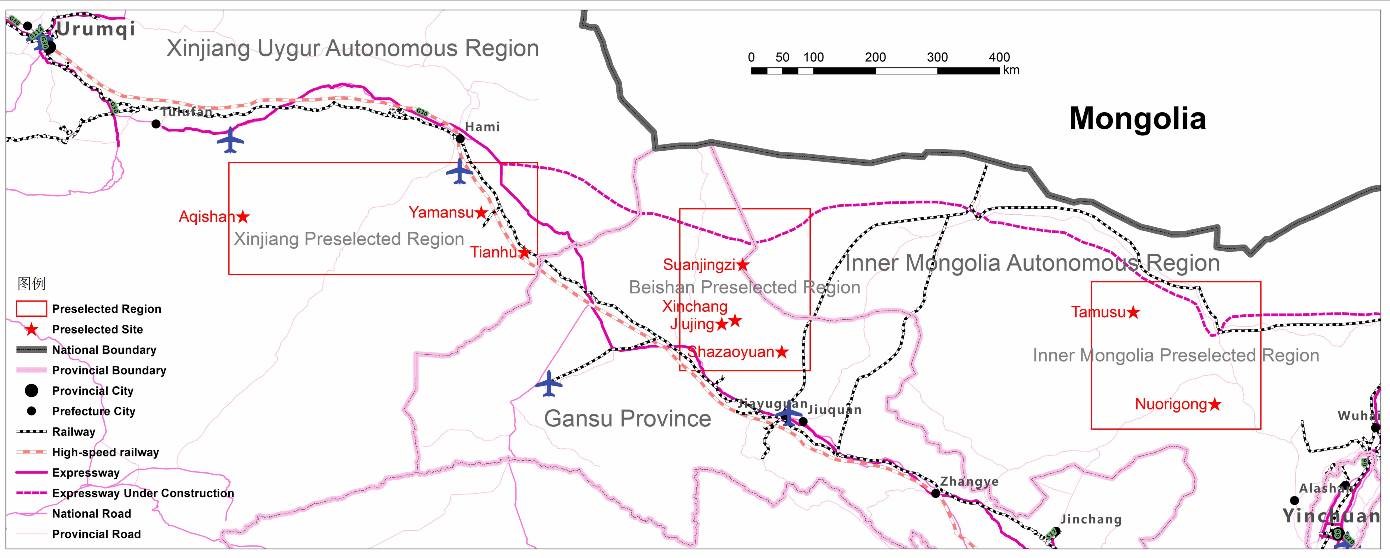
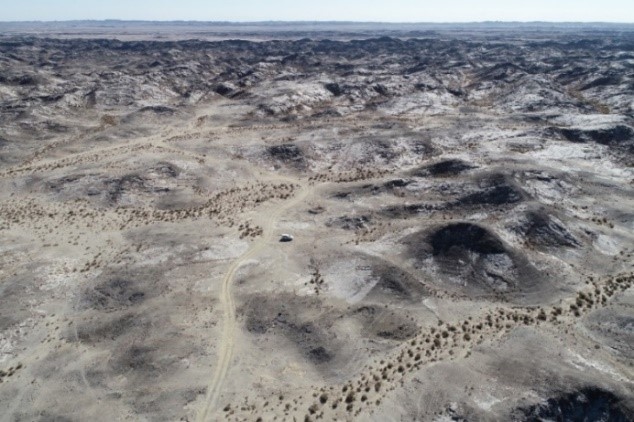
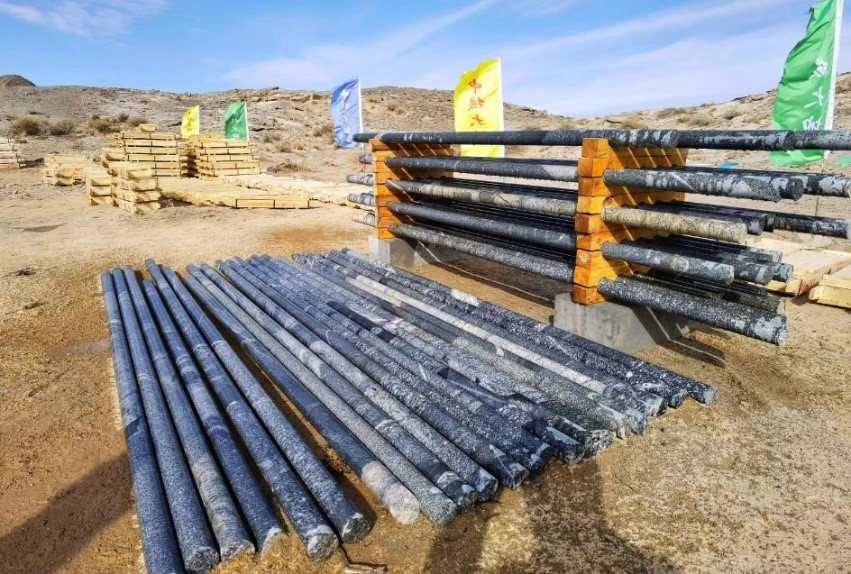

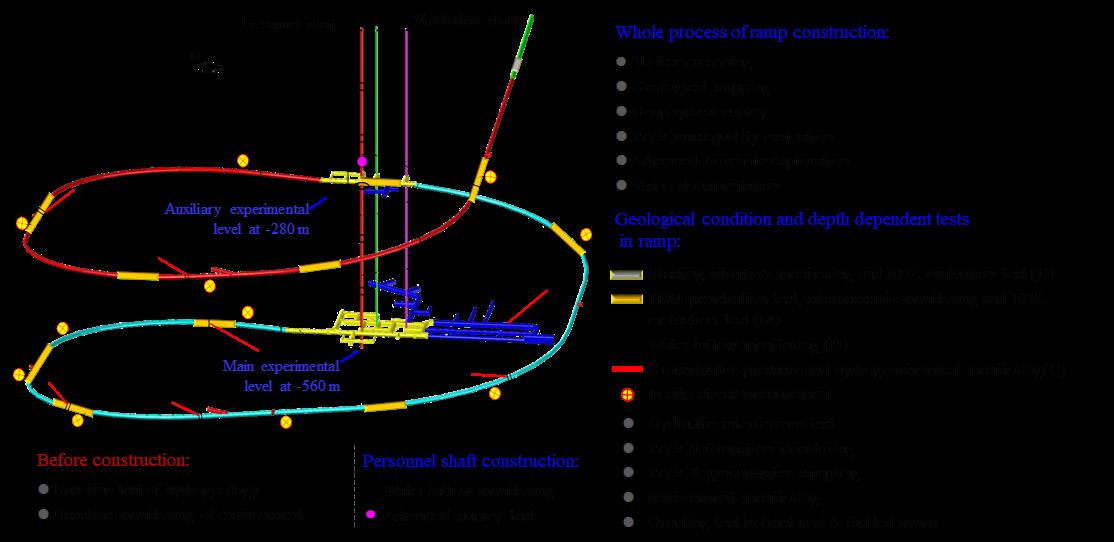
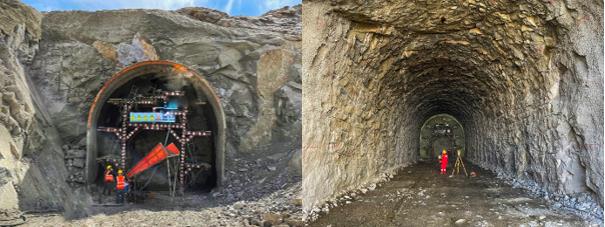







 中国岩石力学与工程学会微信订阅号
中国岩石力学与工程学会微信订阅号
 科普岩石力学与工程
科普岩石力学与工程